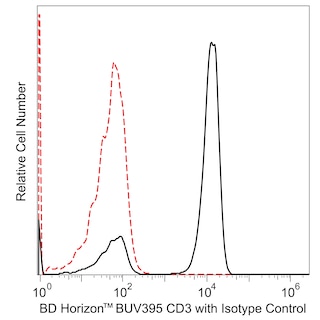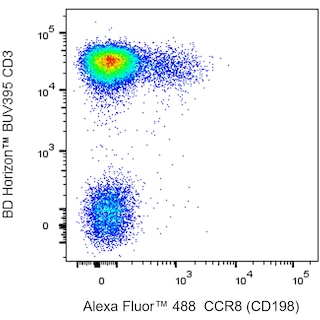-
抗体試薬
- フローサイトメトリー用試薬
-
ウェスタンブロッティング抗体試薬
- イムノアッセイ試薬
-
シングルセル試薬
- BD® AbSeq Assay | シングルセル試薬
- BD Rhapsody™ Accessory Kits | シングルセル試薬
- BD® Single-Cell Multiplexing Kit | シングルセル試薬
- BD Rhapsody™ Targeted mRNA Kits | シングルセル試薬
- BD Rhapsody™ Whole Transcriptome Analysis (WTA) Amplification Kit | シングルセル試薬
- BD Rhapsody™ TCR/BCR Profiling Assays (VDJ Assays) | シングルセル試薬
- BD® OMICS-Guard Sample Preservation Buffer
-
細胞機能評価のための試薬
-
顕微鏡・イメージング用試薬
-
細胞調製・分離試薬
-
- BD® AbSeq Assay | シングルセル試薬
- BD Rhapsody™ Accessory Kits | シングルセル試薬
- BD® Single-Cell Multiplexing Kit | シングルセル試薬
- BD Rhapsody™ Targeted mRNA Kits | シングルセル試薬
- BD Rhapsody™ Whole Transcriptome Analysis (WTA) Amplification Kit | シングルセル試薬
- BD Rhapsody™ TCR/BCR Profiling Assays (VDJ Assays) | シングルセル試薬
- BD® OMICS-Guard Sample Preservation Buffer
- Japan (Japanese)
-
Change country/language
Old Browser
Looks like you're visiting us from {countryName}.
Would you like to stay on the current country site or be switched to your country?


.png)

Multiparameter flow cytometric analysis of CCR8 (CD198) expression on human peripheral blood leucocyte populations. Whole blood was stained with BD Horizon™ BUV395 Mouse Anti-Human CD3 antibody (Cat. No. 563546/563548) and either Alexa Fluor™ 488 Mouse IgG2a, κ Isotype Control (Cat. No. 565358; Left Plots) or Alexa Fluor™ 488 Mouse Anti-Human CCR8 (CD198) antibody (Cat. No. 566890/566916; Right Plots). Erythrocytes were lysed with BD Pharm Lyse™ Lysing Buffer (Cat. No. 555899). Two-parameter pseudocolor density plots showing the correlated expression of CCR8 (CD198) [or Ig Isotype control staining] versus side-light scatter (SSC-A) signals [Top Plots] or CD3 [Bottom Plots] were derived from gated events with the forward and side-light scatter characteristics of viable leucocyte populations or lymphocytes, respectively. Flow cytometry and data analysis were performed using a BD FACSCelesta™ Flow Cytometer System and FlowJo™ software.
.png)

BD Pharmingen™ Alexa Fluor™ 488 Mouse Anti-Human CCR8 (CD198)
.png)
Regulatory Statusの凡例
Any use of products other than the permitted use without the express written authorization of Becton, Dickinson and Company is strictly prohibited.
Preparation and Storage
推奨アッセイ手順
BD™ CompBeads can be used as surrogates to assess fluorescence spillover (Compensation). When fluorochrome conjugated antibodies are bound to CompBeads, they have spectral properties very similar to cells. However, for some fluorochromes there can be small differences in spectral emissions compared to cells, resulting in spillover values that differ when compared to biological controls. It is strongly recommended that when using a reagent for the first time, users compare the spillover on cell and CompBead to ensure that BD Comp beads are appropriate for your specific cellular application.
Product Notices
- This reagent has been pre-diluted for use at the recommended Volume per Test. We typically use 1 × 10^6 cells in a 100-µl experimental sample (a test).
- An isotype control should be used at the same concentration as the antibody of interest.
- Source of all serum proteins is from USDA inspected abattoirs located in the United States.
- Caution: Sodium azide yields highly toxic hydrazoic acid under acidic conditions. Dilute azide compounds in running water before discarding to avoid accumulation of potentially explosive deposits in plumbing.
- For fluorochrome spectra and suitable instrument settings, please refer to our Multicolor Flow Cytometry web page at www.bdbiosciences.com/colors.
- Alexa Fluor® 488 fluorochrome emission is collected at the same instrument settings as for fluorescein isothiocyanate (FITC).
- This product is provided under an intellectual property license between Life Technologies Corporation and BD Businesses. The purchase of this product conveys to the buyer the non-transferable right to use the purchased amount of the product and components of the product in research conducted by the buyer (whether the buyer is an academic or for-profit entity). The buyer cannot sell or otherwise transfer (a) this product (b) its components or (c) materials made using this product or its components to a third party or otherwise use this product or its components or materials made using this product or its components for Commercial Purposes. Commercial Purposes means any activity by a party for consideration and may include, but is not limited to: (1) use of the product or its components in manufacturing; (2) use of the product or its components to provide a service, information, or data; (3) use of the product or its components for therapeutic, diagnostic or prophylactic purposes; or (4) resale of the product or its components, whether or not such product or its components are resold for use in research. For information on purchasing a license to this product for any other use, contact Life Technologies Corporation, Cell Analysis Business Unit Business Development, 29851 Willow Creek Road, Eugene, OR 97402, USA, Tel: (541) 465-8300. Fax: (541) 335-0504.
- Please refer to http://regdocs.bd.com to access safety data sheets (SDS).
- Alexa Fluor™ is a trademark of Life Technologies Corporation.
- Please refer to www.bdbiosciences.com/us/s/resources for technical protocols.
関連製品



.png?imwidth=320)


The 433H monoclonal antibody specifically binds to C-C chemokine receptor type 8 (CC-CKR-8 or CCR8) which is also known as CD198, GPRCY6, CY6, CKRL1, CMKBR8, CMKBRL2, or TER1. CCR8 (CD198) is a seven-transmembrane, G-protein-coupled, glycoprotein receptor that belongs to the beta chemokine receptor family. CCR8 is expressed on monocytes, macrophages, eosinophils, Langerhans cells, thymocytes, and vascular smooth muscle cells. It is preferentially expressed on some T cell subsets including skin resident memory T cells, type 2 T-helper (Th2-like) cells, and T regulatory cells. CCR8 is a receptor for the chemokine C-C motif chemokine 1 (CCL1), also known as SCYA1 or I-309, and plays a role in regulating monocyte and T cell chemotaxis and thymocyte apoptosis. CCR8 may play a role in lung T cell recruitment in asthma and can serve as an alternative coreceptor to CD4 for HIV-1 infection. The 433H antibody reportedly neutralized the chemotactic response of cultured T cells to CCL1.
Development References (8)
-
D'Ambrosio D, Iellem A, Bonecchi R, et al. Selective up-regulation of chemokine receptors CCR4 and CCR8 upon activation of polarized human type 2 Th cells.. J Immunol. 1998; 161(10):5111-5. (Biology). View Reference
-
Fox JM, Najarro P, Smith GL, Struyf S, Proost P, Pease JE. Structure/function relationships of CCR8 agonists and antagonists. Amino-terminal extension of CCL1 by a single amino acid generates a partial agonist.. J Biol Chem. 2006; 281(48):36652-61. (Biology). View Reference
-
Haque NS, Fallon JT, Pan JJ, Taubman MB, Harpel PC. Chemokine receptor-8 (CCR8) mediates human vascular smooth muscle cell chemotaxis and metalloproteinase-2 secretion.. Blood. 2004; 103(4):1296-304. (Biology). View Reference
-
Lee S, Tiffany HL, King L, Murphy PM, Golding H, Zaitseva MB. CCR8 on human thymocytes functions as a human immunodeficiency virus type 1 coreceptor.. J Virol. 2000; 74(15):6946-52. (Biology). View Reference
-
Louahed J, Struyf S, Demoulin JB, et al. CCR8-dependent activation of the RAS/MAPK pathway mediates anti-apoptotic activity of I-309/ CCL1 and vMIP-I.. Eur J Immunol. 2003; 33(2):494-501. (Biology). View Reference
-
McCully ML, Ladell K, Hakobyan S, Mansel RE, Price DA, Moser B. Epidermis instructs skin homing receptor expression in human T cells.. Blood. 2012; 120(23):4591-8. (Clone-specific: Flow cytometry). View Reference
-
Mutalithas K, Guillen C, Raport C, et al. Expression of CCR8 is increased in asthma.. Clin Exp Allergy. 2010; 40(8):1175-85. (Immunogen: Blocking, Flow cytometry, Functional assay, Immunohistochemistry, Inhibition). View Reference
-
Pease JE. Is there a role for CCR8 in the pathogenesis of asthma?. Clin Exp Allergy. 2010; 40(8):1110-2. (Clone-specific). View Reference
Please refer to Support Documents for Quality Certificates
Global - Refer to manufacturer's instructions for use and related User Manuals and Technical data sheets before using this products as described
Comparisons, where applicable, are made against older BD Technology, manual methods or are general performance claims. Comparisons are not made against non-BD technologies, unless otherwise noted.
For Research Use Only. Not for use in diagnostic or therapeutic procedures.
Report a Site Issue
This form is intended to help us improve our website experience. For other support, please visit our Contact Us page.